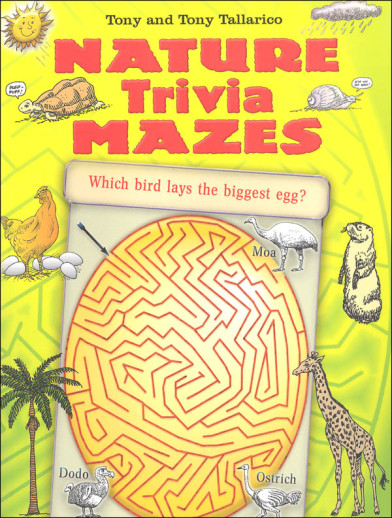We use cookies to make your experience better. To comply with the new e-Privacy directive, we need to ask for your consent to set the cookies. Learn more.
Nature Trivia Mazes
If you like to do mazes and you like trivia, this is a wonderful combination of the two. Journey through each maze to find the answer to the science/nature trivia question. There are 35 mazes, some more challenging than others: trivia question at the top of the page, follow the maze's path to one of the answers within the maze (might be a word or picture) - only one of them is correct! All puzzles are black and white and answers are found in the back of the book. ~ Donna
Everyone knows that the cheetah is the world's fastest animal but what's the second fastest? How do giraffes clean their ears? What color are flamingos at birth, and how many eyelids do camels have?
Find your way to the answers to these and other intriguing questions about animals and plants in this unique book of 35 challenging mazes. Don't worry about getting stranded in the jungle or the desert solutions appear at the end!


for the kids